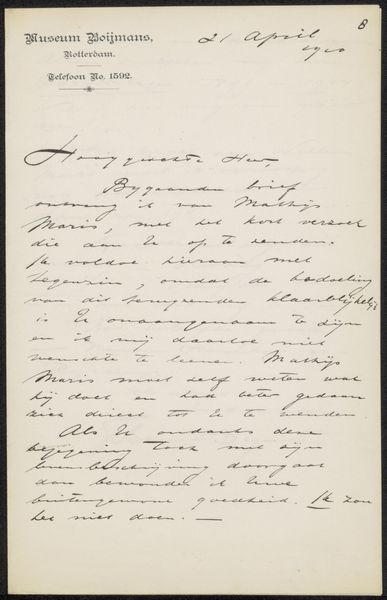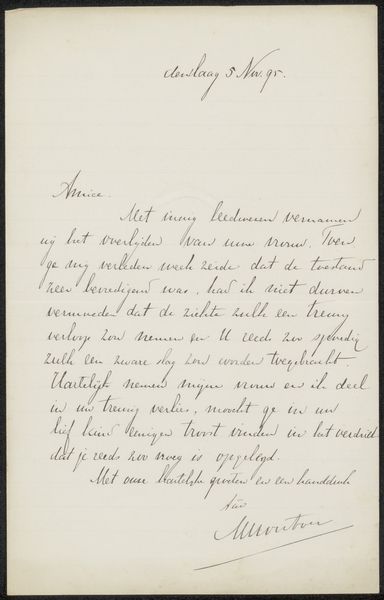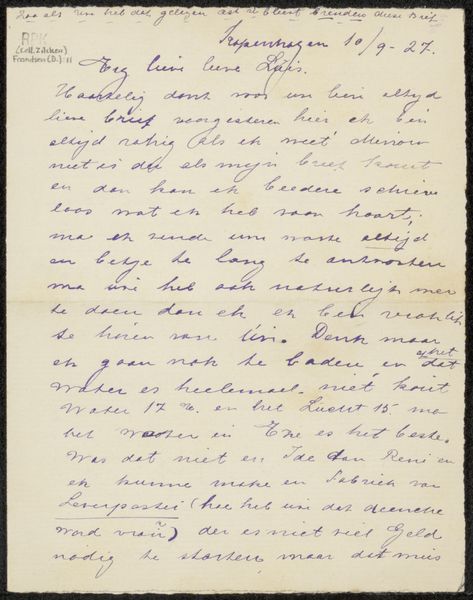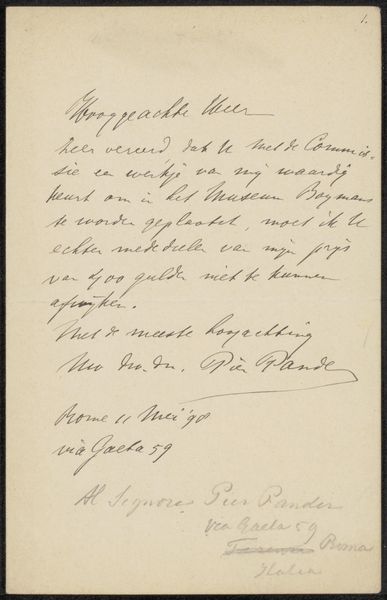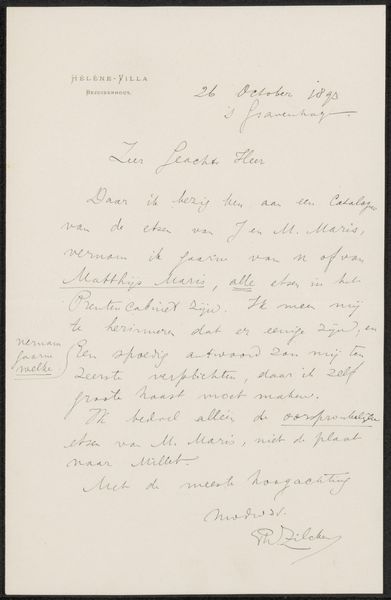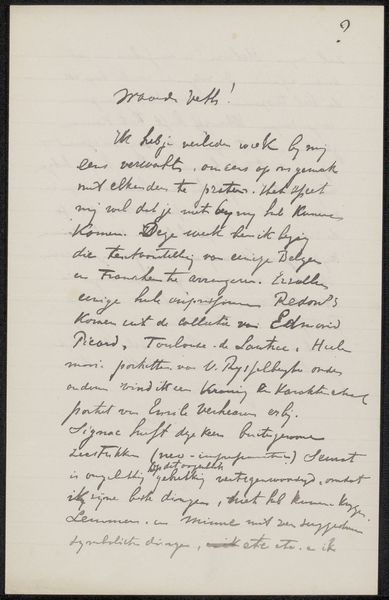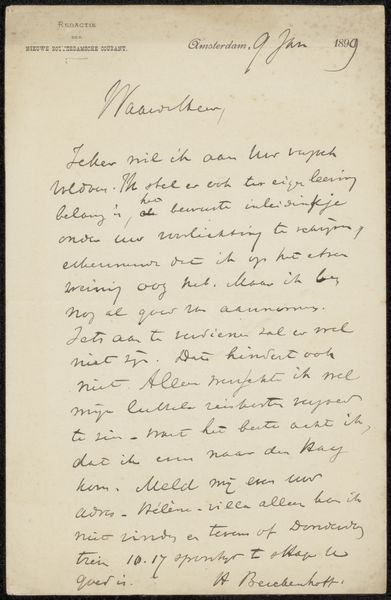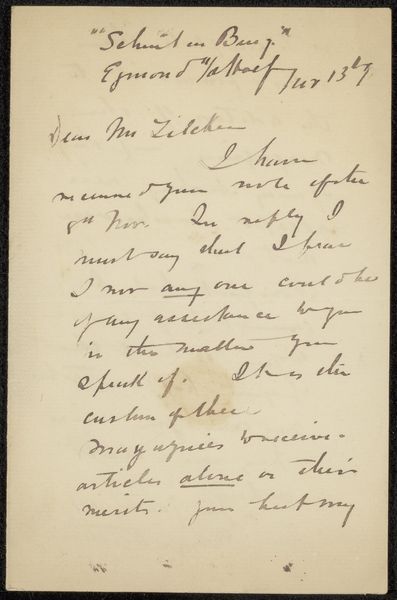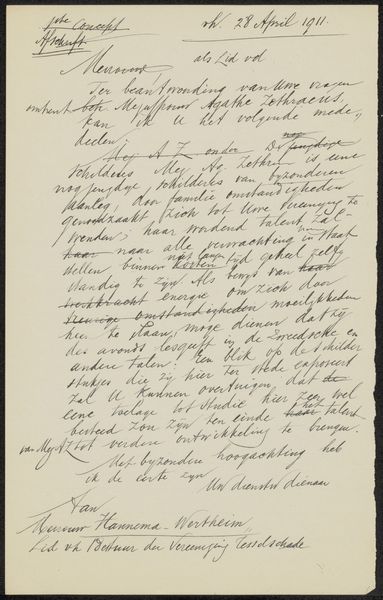
drawing, paper, ink, pen
#
portrait
#
drawing
#
pen drawing
#
pen sketch
#
paper
#
ink
#
pen
Copyright: Rijks Museum: Open Domain
Editor: Here we have "Brief aan Philip Zilcken," a drawing attributed to Gustave Fraipont, created sometime between 1859 and 1923. It appears to be ink on paper, a handwritten letter perhaps? What can you tell me about it? Curator: This piece provides an interesting glimpse into the material culture of correspondence in the late 19th century. Think about the labour involved: the production of the paper itself, the harvesting and processing of materials for the ink, the artist’s skill in manipulating the pen to form these elegant, yet legible, characters. How does that context influence our understanding? Editor: That’s fascinating, I hadn't considered that. It looks quite casual, just a simple letter. Curator: But simplicity can be deceptive. Consider the social function of letter writing at this time. It served not just as a means of communication but also a performance of literacy, class, and social connection. The very act of writing this letter, choosing the paper, and employing a certain style of script, contributes to its meaning. Who has access to writing tools and literacy in the first place? Editor: So you're saying the material and the method are just as important as what the letter actually says? Curator: Exactly. It challenges the traditional art historical focus on only the "artistic" merit of drawings. It forces us to ask questions about the means of artistic production, distribution, and even consumption. Think of the postal service, its labour force, and its function in connecting individuals. All these aspects influenced Fraipont’s output. What's your takeaway now? Editor: That viewing it this way, as a product of many levels of production, shows how something as seemingly straightforward as a letter connects to so many material and social realities. Curator: Precisely, and appreciating that helps us see beyond the surface aesthetic and appreciate the richer layers of context.
Comments
No comments
Be the first to comment and join the conversation on the ultimate creative platform.

